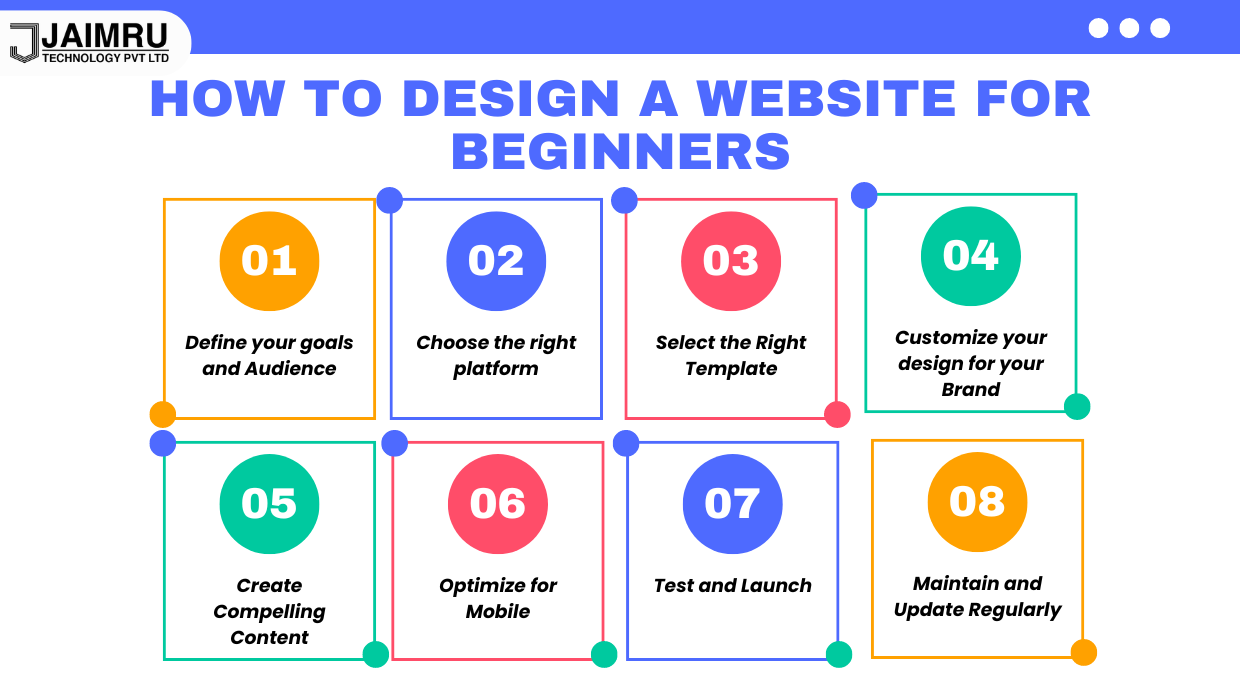
Posted On : 24-06-2024 11:03:00
In today's digital age, having a strong online presence is crucial for the success of any small business. A well-designed website can help you attract new customers, showcase your products or services, and establish credibility in your industry. If you're a small business owner looking to design a website for your venture but aren't sure where to start, fear not! In this guide, we'll walk you through simple steps to create a professional-looking website that effectively represents your brand and drives results.
Before diving into the design process, take some time to clarify your goals and identify your target audience. Ask yourself:
- What do I want to achieve with my website? (e.g., increase sales, generate leads, provide information)
- Who is my target audience, and what are their needs and preferences?
- What key messages do I want to convey to my audience?
Understanding your goals and audience will help you make informed decisions throughout the design process and create a website that resonates with your target market.
Next, choose a Website building platform that suits your needs and technical skill level. For small businesses, user-friendly platforms like WordPress, Wix, and Squarespace are excellent choices. These platforms offer intuitive drag-and-drop interfaces, pre-designed templates, and built-in features that make it easy to create and manage your website without any coding knowledge.
Once you've chosen a platform, browse through the available templates and select one that aligns with your brand and objectives. Look for templates that are visually appealing, easy to navigate, and customizable to suit your needs. Templates provide a starting point for your website design and can save you time and effort in the customization process.
With your template selected, it's time to customize your website's design to reflect your brand identity. Add your logo, brand colors, and imagery to create a cohesive and visually appealing look. Customize the layout, fonts, and styling to match your brand aesthetic and create a memorable impression on your visitors. Most website builders offer intuitive customization options that allow you to adjust design elements with ease.
Content is key to engaging visitors and encouraging them to take action on your website. Take the time to create high-quality, relevant content that speaks to your audience's needs and interests. This may include informative product or service descriptions, engaging blog posts, compelling imagery, and multimedia content such as videos or slideshows. Organize your content in a clear and logical manner to make it easy for visitors to find the information they're looking for.
With more and more people accessing the internet on mobile devices, it's essential to ensure that your website is optimized for mobile viewing. Most website building platforms offer responsive design features that automatically adjust your website layout to fit different screen sizes. However, it's important to preview your website on mobile devices to ensure that it looks and functions correctly. A mobile-friendly website will provide a seamless browsing experience for your visitors and improve your chances of attracting and retaining customers.
Before launching your website, thoroughly test it to identify any issues or errors. Check for broken links, typos, and formatting inconsistencies across different browsers and devices. Solicit feedback from friends, family, or colleagues to get fresh perspectives on your website's design and usability. Once you're confident that everything is working smoothly, it's time to launch your website and share it with the world.
Creating a website is just the beginning. To keep your website relevant and engaging, it's important to maintain and update it regularly. Review your content periodically, update information, and make any necessary adjustments to your design to keep it fresh and up-to-date. Monitor website analytics to track performance metrics such as traffic, engagement, and conversions, and use this data to inform future updates and improvements.
Website Designing for your small business doesn't have to be complicated. By following these simple steps and leveraging user-friendly website building platforms, you can create a professional-looking website that effectively showcases your brand and connects with your target audience. Remember to define your goals and audience, choose the right platform, customize your design, create compelling content, optimize for mobile, test thoroughly, and maintain and update regularly. With patience, creativity, and a focus on delivering value to your customers, you can create a website that helps your small business thrive in the digital age.
Copyright 20-2025 Jaimru Technology Private Limited | All Rights Reserved.